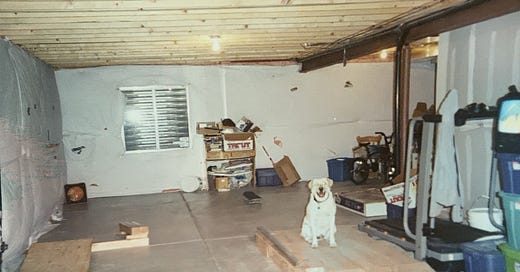** “Cause long as I'm alive I'ma live illegal” is a fun mantra for petty crimes like skateboarding and stealing from Wal-Mart. It is not a stance anyone should be forced to take about their health, body, or reproductive system. This newsletter edition is inspired by everyone who made something positive out of the world crumbling around them or continues to fight to do so. The following isn’t a hot take—simply five minutes to think about something else.**
The final week of April 2022 was a wild one for skateboarding. It’s a rare treat for us nerds to have at least one topic of gossip for the week, let alone like five major events to speculate and dissect.
One that nearly slipped through the cracks of team shake-ups and Berra burns came from the Godfather of online skate archiving, The Chrome Ball Incident. Chops sat down with Johnathan Mehring to discuss the photographer's victories, triumphs, political beef, and origin stories.
I’m always fascinated to find out what people grew up skating, be it a Safeway curb or, in Mehring’s case–a mini ramp made of two sheets of plywood in rural Virginia. The photos of his TF jogged my memory, and I scurried to my archives to track down my memories.
Growing up in a time before public skateparks in every neighborhood and the fact that I was 12, I made my own. With the Europe 99 video and the skatepark section of Menikmati as my blueprints, I got started on phase one of Al’s Skate House™.
Phase One
We moved into a weird section of the inner city that was once parceled into small acreage where people kept horses, goats, chickens, and packs of Tibetan Mastiffs. Eventually, the properties turned into a couple of blocks of new developments. This area of my new neighborhood became a goldmine of free lumber.
The house we lived in was the first completion of the developments. After sketching up the plans for my TF, I walked across the street and began hauling piles of wood back home. Like most good DIY projects, I did not get the permission of the owners of the basement to begin construction.
After hammering away for a while, my mom told me to use the drill instead. My first obstacle was a multi-purpose precursor to the A-frame that would ruin skateparks across the country.
This part-kicker and part-hubba layered with half a box of Gulf Wax saw many roll-offs and noseslides. In my eighth-grade hammer era, this apparatus saw:
A gap to front board
An Upriver boardslide
About six inches of a half-cab heelflip noseslide
Phase Two
Without a power saw or the advice of Ben De Gros, I was limited to the scraps pre-cut by the professional construction workers across the street. I framed up a fun box with the musical stylings of Train blaring twice an hour on the FM radio of my prized Magnavox MD6924.
At some point, I found a pipe. That galvanized steel wore down many brad bits and screws before discovering Cobalt bits and countersinking. Loosely attaching it to the side of the box created the most dangerous obstacle in the TF and did not see a lot of action.
Phase Three
A found roll of Aluminum Foil Tape for Duct Work became my Bondo. I stuffed the cracks in the concrete and the bottoms of ramps with dirt and taped off the surface to create a smoother ride. A treadmill sitting adjacent to the box was pushed back to make an out-ledge.
Two more found plywood sheets were screwed into the edges of Rubbermaid storage containers to create banks at both ends of the course to keep the lines going. Linking lines soon became an endurance sport.
The bank’s peak was their feature in a middle school project exploring what shoe offered the best fakie heelflips on flat and angled obstacles:
Koston 3’s
Dress shoes
Basketball shoes
Hiking boots
I recorded the findings of my hypothesis, data, and conclusion on a Sony Handycam. After a passing grade, the tape was sent to Sole Technology by Ms. Christensen. I’m still waiting on that box.
Phase Four
Like all DIYs, the basement was lost to gentrification and greed. In an effort to pad the value of the house, my parents decided to finish the basement. It sold three years later over the listing price.
The fiberglass-insulated walls were covered in sheetrock through a combination of cheap labor, supplies that fell off the back of the truck, and the DIY spirit. I still owned squatter’s rights to the basement, and my first mattress on the floor and a wall dedicated to New Era caps would replace the skateable structures.
Undeterred and now an accomplished carpenter, I took to the driveway. Following the instructions of the previously discussed Monkey Stix video, I emerged with a better box for the entire Ruby Hill neighborhood to see. The ledge would eventually be transported to an unfinished phase five in an underground garage and destroyed in a skate beef.
As a youth, the work I put in taught me a lot about appreciating spots as they come and go. Now living far from that basement in the land where the DIY culture is alive and well, places like The Courts hold a special place in my heart. I have no interest in skating the latest concrete creations, but wherever a kid nails a couple of pieces of wood together, count me in.



